Communities receive SMS alerts for disasters, directing them to Safe Zones. At the Safe Zone they can access an offline Emergency Kit.
Connecting resilience
Connecting Resilience is a service system for disaster-affected communities, introducing Safe Zones near residential and public buildings. These zones provide Wi-Fi access to download an Emergency Kit, which guides individuals through a disaster. Safe Zones also serve as communication hubs, and the system uses a low-cost digital library for offline operation. The Emergency Kit prioritizes crucial information, provides crisis management instructions, and helps locate essential resources.
Project information
Crisis management experts and communities involved in natural disasters report that network connectivity often shuts down during said crisis situations, removing a crucial source of information. Furthermore, the emotional vulnerability and potential shock during a crisis can impair decision making.
"There is a feeling of uncertainty." says Silvana D., a witness of the earthquake in Zagreb, Croatia, on March 22, 2020.
In such situations, people typically carry their phone, keys, and depending on the weather, warm clothing. In fact, the majority of interviewees stated that they had their phone with them during a crisis.
Despite the challenge of delivering critical information without internet connectivity, mobile phones remain crucial, even in extreme situations. They could be significant channels for communication and information dissemination. Disaster management systems need to shed light on concepts that guide people through crises and provide a safety net, and ensure that everyone, regardless of their location or situation, can access the necessary information to navigate the crisis safely.
Furthermore, interviews highlighted the power of collective action. Especially during times of crisis, communities coming together, pooling their resources, and supporting one another can make the difference between despair and resilience. The concept that I am introducing aims to amplify this communal strength.
Method
I used a human-centered approach to understand the concept of resilience in disasters. This was achieved through interviews, brainstorming sessions and enactments of concepts with various experts in humanitarian construction and sustainable emergency project management, as well as individuals who have experienced disasters firsthand.
The insights gained from the initial interviews and my desk research informed the creation of values that guided the final concept and grounded the experience.
Collaborating with Nokia, a global telecommunications company, offered a multidisciplinary perspective. Interviews with their engineers provided a technological view on disaster navigation.
Early on, it became apparent that the project's nature allowed for the integration of available solutions. In my design process I explored an approach that leverages existing resources, asking myself what problem I could solve with these elements in a crisis. The goal was to create minimal new products, focusing on the needs of the affected community.
Result
Connecting Resilience is a service system designed to assist local communities affected by natural disasters. It introduces the concept of Safe Zones. These are areas near residential and public buildings, strategically selected by stakeholders such as the government, municipalities, private companies, and NGOs, based on the type of disaster and expected damage. Safe Zones provide stability during unstable times.
Affected communities receive an SMS detailing the type of disaster and directions to the nearest Safe Zone. Here, they can access Wi-Fi to download an Emergency Kit. This Wi-Fi is facilitated by a low-cost digital library, capable of operating offline, similar to Internet-in-a-Box that is currently used for educational purposes in areas without internet connectivity.
In Safe Zones, these libraries provide access to vital information necessary for disaster navigation. Safe Zones also serve as communication hubs. If someone doesn't possess a smartphone, they can engage with someone who does to obtain essential information.
The Emergency Kit is comparable to a software that guides people through a disaster. Upon opening the software, it places the phone into low battery mode, with the most important information displayed first due to the significance of information hierarchy. After reaching a Safe Zone and contacting loved ones, individuals can review instructions on crisis management and use the map to locate first aid, electricity, shelters, and community resources. Community members can also upload messages about their resources to share with others.
In collaboration with:

Connecting Resilience Concept Video
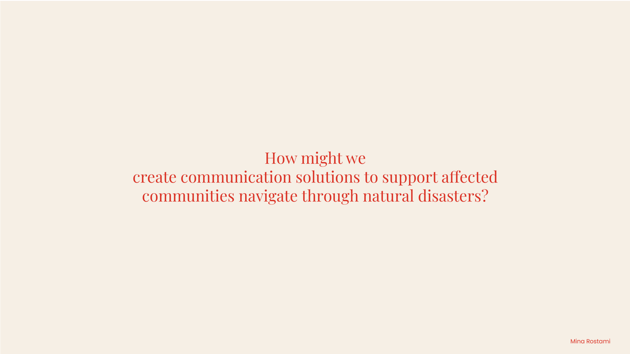
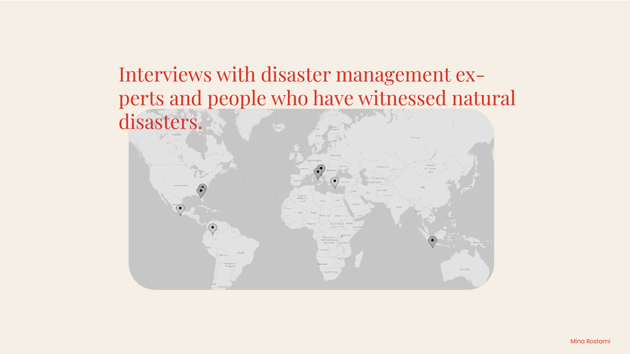
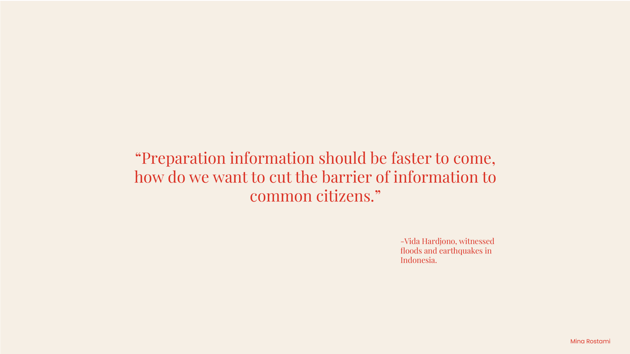
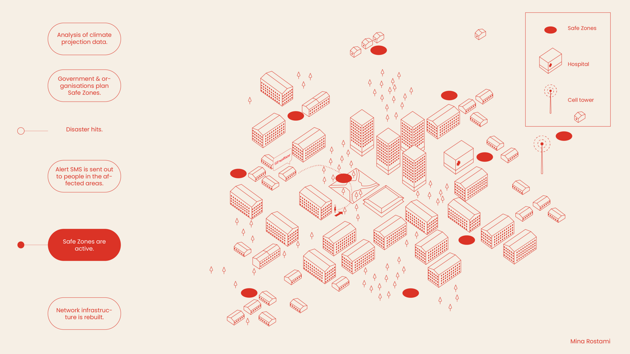
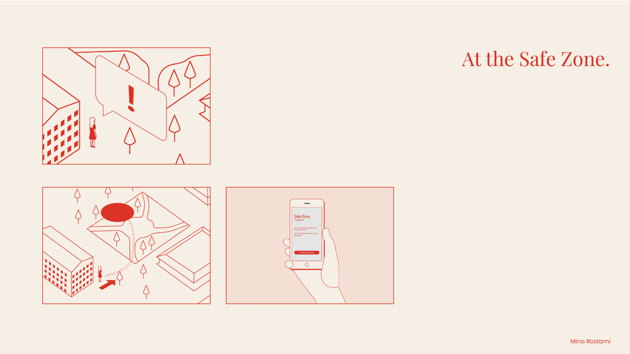
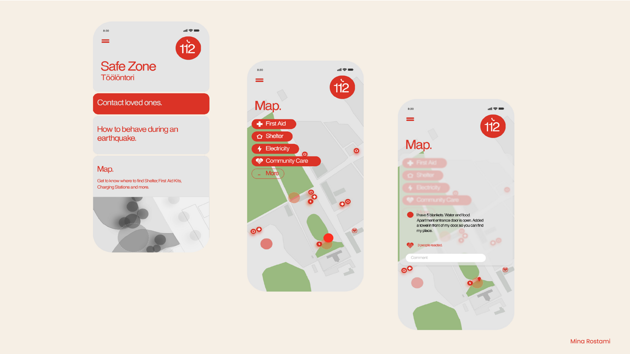
The Emergency Kit is a software providing step-by-step disaster guidance.
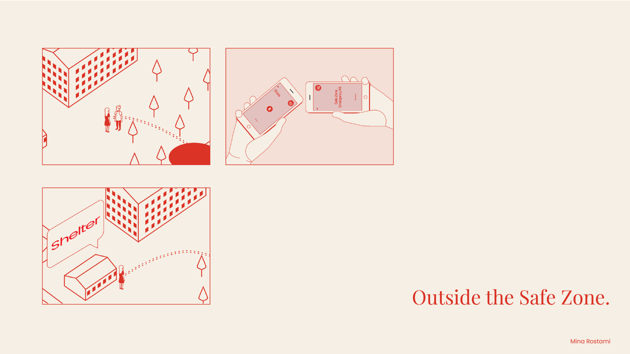
Outside of the Safe Zone, the Emergency Kit can be shared with those who were unable to download it.









